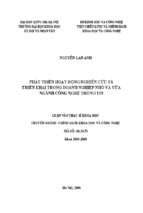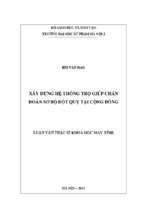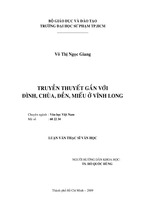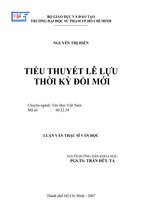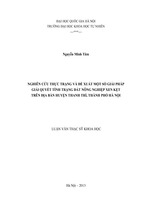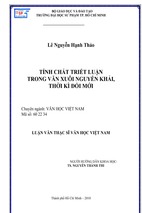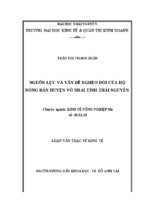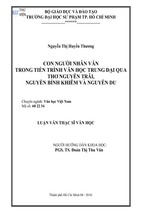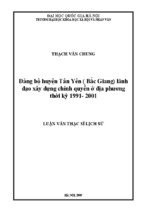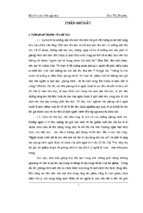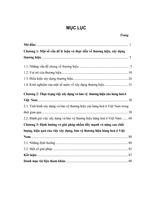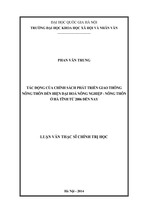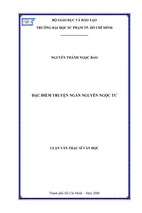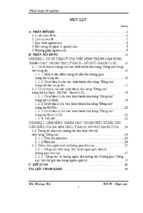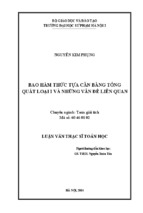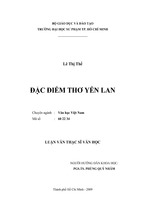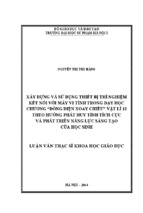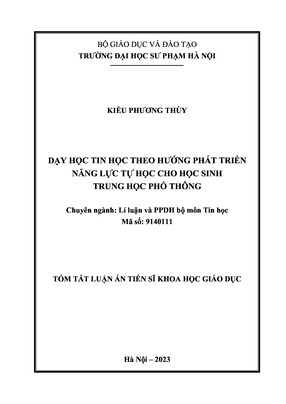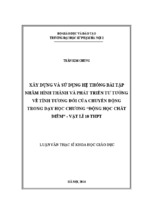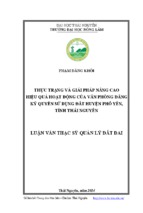VIETNAM NATIONAL UNIVERSITY, HANOI
UNIVERSITY OF LANGUAGES AND INTERNATIONAL STUDIES
FACULTY OF POST-GRADUATE STUDIES
NGUYỄN THỊ LIÊN
USING MIND-MAPPING TECHNIQUE TO IMPROVE VOCABULARY
RETENTION OF FIRST-YEAR STUDENTS: AN ACTION RESEARCH
PROJECT AT MILITARY TECHNICAL ACADEMY
(SỬ DỤNG BẢN ĐỒ TƯ DUY ĐỂ CẢI THIỆN KHẢ NĂNG GHI NHỚ TỪ
VỰNG CỦA SINH VIÊN NĂM THỨ NHẤT: MỘT NGHIÊN CỨU HÀNH
ĐỘNG TẠI HỌC VIỆN KỸ THUẬT QUÂN SỰ)
M.A MINOR PROGRAMME THESIS
Field: English Teaching Methodology
Code: 60140111
Hanoi, 2016
VIETNAM NATIONAL UNIVERSITY, HANOI
UNIVERSITY OF LANGUAGES AND INTERNATIONAL STUDIES
FACULTY OF POST-GRADUATE STUDIES
NGUYỄN THỊ LIÊN
USING MIND-MAPPING TECHNIQUE TO IMPROVE VOCABULARY
RETENTION OF FIRST-YEAR STUDENTS: AN ACTION RESEARCH
PROJECT AT MILITARY TECHNICAL ACADEMY
(SỬ DỤNG BẢN ĐỒ TƯ DUY ĐỂ CẢI THIỆN KHẢ NĂNG GHI NHỚ TỪ
VỰNG CỦA SINH VIÊN NĂM THỨ NHẤT: MỘT NGHIÊN CỨU HÀNH
ĐỘNG TẠI HỌC VIỆN KỸ THUẬT QUÂN SỰ)
M.A MINOR PROGRAMME THESIS
Field: English Teaching Methodology
Code: 60140111
Supervisor: Assoc. Prof. Dr. Nguyễn Văn Độ
Hanoi, 2016
Declaration
I certify that I myself write this thesis entitled “Using mind-mapping
technique to improve vocabulary retention of first-year students: An action
research project at Military Technical Academy.” It is not a plagiarism or
made by others. Anything related to others’ works is written in quotation, the
sources of which are listed on the list of references. If then the pronouncement
proves wrong, I am ready to accept any academic punishment, including the
withdrawal or cancellation of my academic degree.
Signature
i
Acknowledgements
First and foremost, I would like to express my gratitude to my
supervisor, Assoc. Prof. Dr Nguyễn Văn Độ whose reference materials,
support, stimulating suggestions and encouragement helped me in all stages of
this research for and writing of this thesis. Without his critical comments and
valuable suggestions, this research could not have been completed.
I take this opportunity to express my sincere thanks to all my teachers
in Faculty of Post-Graduate studies, University of Languages and
International Studies, National University, Hanoi for their lectures which
enable me to gain a lot of theoretical and practical knowledge.
Furthermore, I want to thank my colleagues and students at Military
Technical Academy who helped me carry out the investigation of the study.
Finally, I am really grateful to my family and my husband for their
encouragement and support to my process of writing of the thesis.
ii
Abstract
Vocabulary is one of the most significant parts of English, and its learning in
an efficient way gets the most attention by language learners. In Vietnam, one
of the most difficulties many students face is to learn, memorize and recall
word meanings. So, it should be taught in a way that learners will be capable
of recalling them easily. The purpose of this study was to bring mind-mapping
technique to improve vocabulary retention of Vietnamese learners. This study
was based on action research, in which 32 students in the K51 Information
class at Military Technical Academy were investigated. Based on the purposes
of the study, a pre-test and a post-test were used to investigate the
effectiveness of mind-mapping on the student’s vocabulary retention. Also, a
survey questionnaire was designed to get the students’ attitudes about this
technique in vocabulary learning and memorizing. After the data were
elaborately calculated and analyzed, it indicated that students were successful
in improving vocabulary retention with the implementation of the treatment
and they seemed to highly value this teaching technique.
iii
TABLE OF CONTENTS
Page
Declaration ..........................................................................................................i
Acknowledgements ........................................................................................... ii
Abstract ............................................................................................................ iii
Table of contents .............................................................................................. iv
Lists of abbreviations ...................................................................................... vii
List of tables and figures ................................................................................ viii
CHAPTER 1: INTRODUCTION
1.1. Rationale of the study..................................................................................1
1.2. Aims of the study ........................................................................................2
1.3. Research question........................................................................................2
1.4. Scope of the study .......................................................................................2
1.5. Significance of the study .............................................................................3
1.6. Method of the study ....................................................................................3
1.7. Design of the study......................................................................................3
CHAPTER 2: LITERATURE REVIEW
2.1.
Vocabulary and its importance ............................................................5
2.1.1. Vocabulary definition ..............................................................................5
2.1.2. The role of vocabulary in second language learning ...............................6
2.2.
Memorizing word meanings .................................................................7
2.2.1. Vocabulary retention ...............................................................................7
2.2.2. Types of memory .....................................................................................7
2.2.3. Strategies of teaching and learning vocabulary .......................................8
2.3.
Mind-mapping .....................................................................................10
2.3.1. Definition ...............................................................................................10
2.3.2. Steps to create a mind map ....................................................................11
2.3.3. The significance of mind-mapping in language classroom ...................12
iv
2.4. Related studies .........................................................................................13
2.4.1. Review of related studies worldwide .....................................................13
2.4.2. Review of related studies in Vietnam ....................................................14
2.4.3. Gaps in previous research on mind-mapping.........................................15
2.5. Summary ..................................................................................................15
CHAPTER 3: METHODOLOGY
3.1. The context of the study ..........................................................................16
3.1.1. Research setting .....................................................................................16
3.1.2. Teaching material ...................................................................................16
3.1.3. Research participants .............................................................................17
3.2. Research methodology ............................................................................17
3.2.1. Action research definition ......................................................................17
3.2.2. Action research procedure......................................................................18
3.2.3. Data collection instrument .....................................................................19
3.2.3.1. Pre-test and post-test ...........................................................................19
3.2.3.2 Survey questionnaire ............................................................................20
3.2.4. Data collection procedure ......................................................................20
3.2.5. Data analysis ..........................................................................................22
3.3. Summary ..................................................................................................22
CHAPTER 4: FINDINGS AND DISCUSSION
4.1. Quantitative description of results from the pre-test and post-test ...24
4.1.1. The distribution of the test results ..........................................................24
4.1.2. Descriptive statistics...............................................................................26
4.2. Quantitative description of results from the questionnaire ................26
4.2.1. Students’ attitudes towards mind mapping technique ...........................27
4.2.2. The students’ self-evaluation on the effectiveness
of the MM technique .......................................................................................28
v
4.3.
Reliability analysis and correlations ..................................................30
4.3.1. Reliability analysis ...............................................................................30
4.3.2. Correlations ...........................................................................................32
4.4.
Summary ..............................................................................................32
CHAPTER 5: RECOMMENDATIONS AND CONCLUSIONS
5.1. Conclusions ...............................................................................................34
5.2. Limitations of the study ............................................................................36
5.3. Suggestions................................................................................................36
REFERENCES ..............................................................................................38
APPENDICES .................................................................................................. I
vi
LISTS OF ABBREVIATIONS
MM: Mind-mapping
MMs: Mind maps
MTA: Military Technical Academy
NEFE: New English File Elementary
L1: First language
L2: Second language
vii
LIST OF TABLES AND FIGURES
Page
Figure 1: Action research cycle
18
Table 1: Procedure of the research
21
Table 2: Score interval of the tests
24
Figure 2: Comparison between pre-test and post-test score
25
Table 3 : The descriptive statistics of the two tests scores
26
Table 4: Students’ attitudes towards MM technique
27
Table 5: The students’ self-evaluation on the effectiveness of MM
28
technique
Table 6 : Reliability Statistics
30
Table 7: Item-Total Statistics
31
Table 8: Correlations
32
viii
CHAPTER 1
INTRODUCTION
1.1.
Rationale of the study
Vocabulary is the basic factor necessary for mastering a language. This is
because vocabulary is integral to every language skill, including reading,
writing, listening and speaking skill. Individuals cannot easily make
conversations or convey their thoughts in both oral and written forms without
having a certain level of vocabulary knowledge. David Wilkins (1972)
emphasized the importance of vocabulary as “Without grammar, little can be
conveyed; without vocabulary, nothing can be conveyed”. Therefore, the lack of
vocabulary leads to many serious difficulties in foreign language teaching and
learning, notably in Vietnam.
Unfortunately, Vietnamese students in general and MTA students in
particular find it hard to acquire vocabulary. Many reasons for this problem are
pointed out such as school facilities, teaching aids, etc. Out of these reasons, the
traditional method of teaching deserves to be blamed on most. Most of the lesson
is spent on grammar, not vocabulary. When introducing new vocabulary, the
teacher just explains the meanings with Vietnamese equivalents and asks the
students to take notes. The students are explained the meaning, definition,
pronunciation, spelling and grammatical functions of new words. Therefore, the
students cannot recall an unfamiliar word and do not have the habits of recording
their vocabulary in the same place. This outdated translation technique is not
effective at all.
Since teaching method plays an important role in learners’ success in learning
English, it should be more updated so that every student feels more interested in
vocabulary lessons. Teachers should teach in a way that learners will be capable
1
of recalling them easily. In fact, there are many vocabulary learning techniques
such as matching, role play, semantic-mapping, dictionary use, learning
vocabulary through the context, and many others. The desire to help students to
memorize, recall vocabulary more effectively motivated me to conduct the study
titled “Using mind-mapping technique to improve vocabulary retention of firstyear students: An action research project at Military Technical Academy”.
Hopefully, this study may contribute to bettering the vocabulary teaching and
learning.
1.2.
Aims of the study
The first aim of the study is to investigate whether using MM to teach
vocabulary can help students at MTA to improve their vocabulary retention or
not.
Secondly, the study also evaluates the students’ attitudes towards using MM
as a tool to improve their vocabulary retention.
1.3.
Research question
Based on the above-mentioned aims, the following questions are formulated:
1. Does teaching vocabulary using MM help students at MTA to improve
their vocabulary retention?
2. What are the students’ attitudes towards using MM to improve their
vocabulary retention?
1.4.
Scope of the study
Because of the limitation of time and resources, the researcher only focuses
on the use of MM as one technique to improve students’ poor vocabulary
retention.
The study was conducted on the K51 Information class of 32 first-year
students at MTA. Due to the fixed curriculum and limited time, the study was
2
carried out during the second term of school year 2015-2016.
1.5.
Significance of the study
Essentially, the practical consideration of the research is the significance of
the expected research. Hence, the results of this study are expected to be useful
to students, teachers and researchers in the field of English language teaching
and learning. The research is expected to explore and prove the effectiveness of
MM in teaching so that the teachers will conduct the teaching and learning
activities more effectively. Students can use MM as a technique to improve
vocabulary retention. The future researchers are expected to develop some
dimensions which have not been developed in this research such as using
different student population, different students’ condition, etc.
1.6.
Method of the study
The study was based on action research. The subject of the research was the
English non-major first-year students of MTA. Because the researcher wanted to
investigate whether using MM technique to teach vocabulary can improve the
students’ vocabulary retention or not, a pre-test and post- test were carried out.
The purpose of pre-test was to know the students’ knowledge before treatment.
After treatment, the researcher conducted a post-test to know the effectiveness of
treatment after the course of using MM. Also, a survey questionnaire was
designed and administered to students at the end of treatment so that they could
express their ideas about treatment.
1.7.
Design of the study
This study is divided as followed:
Chapter 1: Introduction - provides the rationale, the aim, the research question,
the scope, the significance and the organization of the study.
3
Chapter 2: Literature review–presents the concepts relevant to the topic of the
thesis: vocabulary and its importance, memorizing word meanings, some basic
knowledge about MM, the previous studies related to the fields and some gaps
for present study.
Chapter 3: Methodology - presents the context of the research including the
research settings, teaching materials, research participants. This chapter also
provides information about the action research in general and the instruments,
the data collection procedures and data analysis of this study.
Chapter 4: Findings and discussion - focuses on the results of the tests and the
results from the questionnaire. This chapter also includes the analyses and
discussions of the results.
Chapter 5: Conclusion - points out some limitations, recommendations and
suggestions for further study.
4
CHAPTER 2
LITERATURE REVIEW
2.1.
Vocabulary and its importance
2.1.1. Vocabulary definition
English consists of four main skills: listening, speaking, reading, writing.
Along with these skills are other sub-skills, namely vocabulary, grammar,
collocation, etc. Among these sub-skills, vocabulary plays a crucial part in the
language learning process. Having a wide range of vocabulary is strongly related
to the degree of language proficiency. Hence, it is necessary to make clarify this
term in this study at first.
So far there have been a lot of definitions of vocabulary. Specially, Ur (1996)
characterized vocabulary as the words we teach in the foreign language. She also
stated that a new item of vocabulary may be more than a single word: a
compound of two or three words or multi -word idioms. In addition, Read (2001)
viewed words as the basic building blocks of language, the units of meaning
from which the larger structures such as sentences, paragraphs and whole texts
are formed (p1).
Vocabulary can be defined, roughly, according to the Cambridge Advanced
Learner’s Dictionary, as following:
- All the words known and used by a particular person
- All the words which exist in a particular language or subject
In short, from the definition above, it can be concluded that vocabulary is
a list of words or a set of words in a language or knowledge of words regarding
its forms, meanings. In the present study, vocabulary refers to the words,
compounds and idioms in a language that have meanings used to convey and
5
receive information in oral and written communication.
2.1.2. The role of vocabulary
Even though vocabulary is the sub-skill of a language, it plays a very
important role in language. No one can communicate in any meaningful way
without vocabulary. A large, rich vocabulary gives them the right words to use at
the right time.
According to Richards and Renandya in 2002, vocabulary is a core
component of language proficiency and provides much of the basis for how well
learners speak, listen, read, and write. Similar opinion was also expressed by
McCarthy who stated if you do not know enough vocabulary, you will be able to
express yourself adequately. For learners, he also claimed that no matter how
well the students learn grammar, no matter how successfully the sounds of L2
are mastered, without words to express a wider range of meaning,
communication in an L2 just cannot happen in any meaningful way.
Having a wide range of vocabulary, one’s listening and reading will improve
because he/she will be able to understand more of what is written or spoken.
Their writing will become more effective and more powerful. A person with a
limited vocabulary will never be able to speak, write, read or understand English
effectively. Hence, the lack of vocabulary shortage affects all the other skills.
Nation (2001) emphasized the need to constantly expand vocabulary
knowledge “acquisition of vocabulary is typically a more conscious and
demanding process”. Additionally, he claimed that even at an advanced level,
learners are aware of limitations in their knowledge of L2 words. He clarified the
importance of vocabulary by bringing evidence that vocabulary knowledge is
what the students most need while doing reading activities in order to make
sense of what they are reading. Moreover, it’s his claim that those who do not
6
attain enough vocabulary cannot understand enough of what they read.
Furthermore, they have more limited contextual information provided by known
words to allow them to guess the meaning of unfamiliar words.
All in all, from various above points of view, vocabulary can be seen as
priority area in language learning and teaching. However, the main obstacle all
students face in vocabulary learning is to recall words or memorize words.
Therefore, a focus on improving vocabulary retention is essential for learners to
raise English proficiency.
2.2.
Memorizing word meanings
2.2.1. Vocabulary retention
Vocabulary retention has been defined as “the ability to recall or remember
things after an interval of time. In language teaching, retention of what has been
taught (e.g. grammar rules and vocabulary) may depend on the quality of
teaching, the interest of the learners, or the meaningfulness of the materials”
(Richards & Schmidt, 2002, p. 457).
Vocabulary retention is of the essence in learning English as a foreign
language. It can be understood that as well as the learned vocabulary knowledge
is retained in the memory, the learner can get benefit from it when the time of
recalling it comes. Vocabulary retention is one crucial factor affecting the
success of vocabulary acquisition since it is the ability to recall words that have
been learnt for use when needed.
2.2.2. Types of memory
Memory has been categorized into different sub-types according to duration
of memory retention and capacity of recalling information after original input.
According to Plotrick, R and Kouyoumdjian, H. in 2013, there are three kinds of
memory.
7
Sensory memory is an initial process that receives and holds environment
information for a brief period of time, from an instant to several second. In
contrast, short-term memory can hold only a limited amount of information for a
short period of time, two to thirty seconds. Actually, if sensory memory is a little
or un-controlled processing then short-term memory is a controlled processing
procedure at which the learner can retrieve their newly knowledge with effort.
Finally, there is long-term memory, which can store an almost unlimited amount
of information over long periods of time. This is an automatic processing
procedure that ensure retrieved without effort.
Learning new items involves storing them first in our short-term memory,
and afterwards in long-term memory. However, when learning vocabulary,
learners have problems with memorizing words for a long time. They usually fail
to put the words into long-term memory. Thus, the goal of learning vocabulary
is to transfer the lexical information from short-term memory to long-term
memory during the process of learning. This can be done by various techniques
teachers apply. The more interested in what students have learnt, the better they
can remember. Therefore, teachers should apply vocabulary teaching strategies
effectively so that the students could feel interested in what they learnt.
2.2.3. Strategies of teaching and learning vocabulary
Vocabulary has a crucial role in foreign teaching and learning. However,
from the researcher’s English teaching experience, vocabulary teaching in class
is less focused on than teaching English grammar. Most teachers still emphasize
English grammatical rules in class and neglect vocabulary teaching strategies. As
a result, the learners have difficulties in memorizing large numbers of new words
throughout the entire course. In vocabulary lessons, the main method of word
repetition, saying the L2 word form aloud with the L1 translation is likely to be
used as an aid to remember the words. Hence, both teachers and learners have
8
little interest or enjoyment when teaching and learning vocabulary. The question
is how to teach and learn vocabulary effectively. Up till now, the learners need
training in vocabulary learning strategies so that they are able to remember as
much as possible for what they learnt.
O’Malley and Chamot in 1990 defined learning strategies as special thoughts
or behaviors that individuals use to help them comprehend, learn, or retain new
information. Vocabulary learning strategies are one part of language learning
strategies, which in turn part of general learning strategies (Nation, 2001).
In classifying learning strategies, scholars have different ways of classifying
language learning strategies. According to Wenden and Rubin in 1987, learning
strategies consists of cognitive and meta-cognitive strategies, gaining the most
attention compared to other strategies.
Cognitive strategies include the tools that help a learner store, combine, and
recall the information. These strategies include repetition, review and
development of the concept and the organization of the material. In other words,
cognitive strategies involve interacting with the material to be learned,
manipulating the material mentally or physically or by applying a specific
technique to a learning task (O`Malley and Chamot, 1990).
Meta-cognitive strategies include the tools for guidance and supervision of
cognitive approaches, such as determination of learning goals, posing questions
and evaluation of what has been read. These strategies include supervision,
monitoring, organization and planning. In other words, according to O`Malley
and Chamot (1990), meta-cognitive strategies are higher order executive skills
that may entail planning for, monitoring, or evaluating the success of a learning
activity; meta-cognitive strategies operate directly on informing information,
manipulating it in ways that enhance learning.
9
MMs could be classified as cognitive learning strategies since they fulfill the
main function of cognitive strategies by helping the learners to relate the new
items to the already existing one and recall the information. Therefore, the
researcher elaborates on the term MMs in the following section.
2.3.
Mind-mapping
2.3.1. Definition
The mind-mapping or mind map concept was developed in the early 1970s by
Tony Buzan as a method for students to take notes as briefly as possible.
Buzan in 1993 defined MMs as “a powerful graphic technique which
provides a universal key to unlock the potential of the brain”. This opinion was
supported by Al-Jarf (2011) who argued that a MM is a graphic organizer in
which the major categories radiate from a central idea and sub-categories are
represented as branches of larger branches. In other words, MM is a visual tool
that can be used to generate ideas, take notes, organize thinking, and develop
concepts. There are no limits to the number of connected ideas and links. MM
thus promotes creative thinking and is “a creative note-taking method, which
eases us to remember much information” (De Porter, Reardon, and Nourie,
1999). The best MM is enhanced and enriched with color, picture, symbol and
dimension that will not just help the students to recall information but also make
them feel good in mastering vocabulary knowledge.
By now, it is clear for us to understand that MM is a technique using
diagram for visual presentation of ideas. The diagram is focused on a main
concept which is placed in the center and therefore certain ideas, words or even
phrases related to main concept can be connected. Each idea, word or phrase is
written down and then linked by lines, arrows, branches, or some ways of
showing connections to its major or minor item. This is specifically beneficial
10
- Xem thêm -


